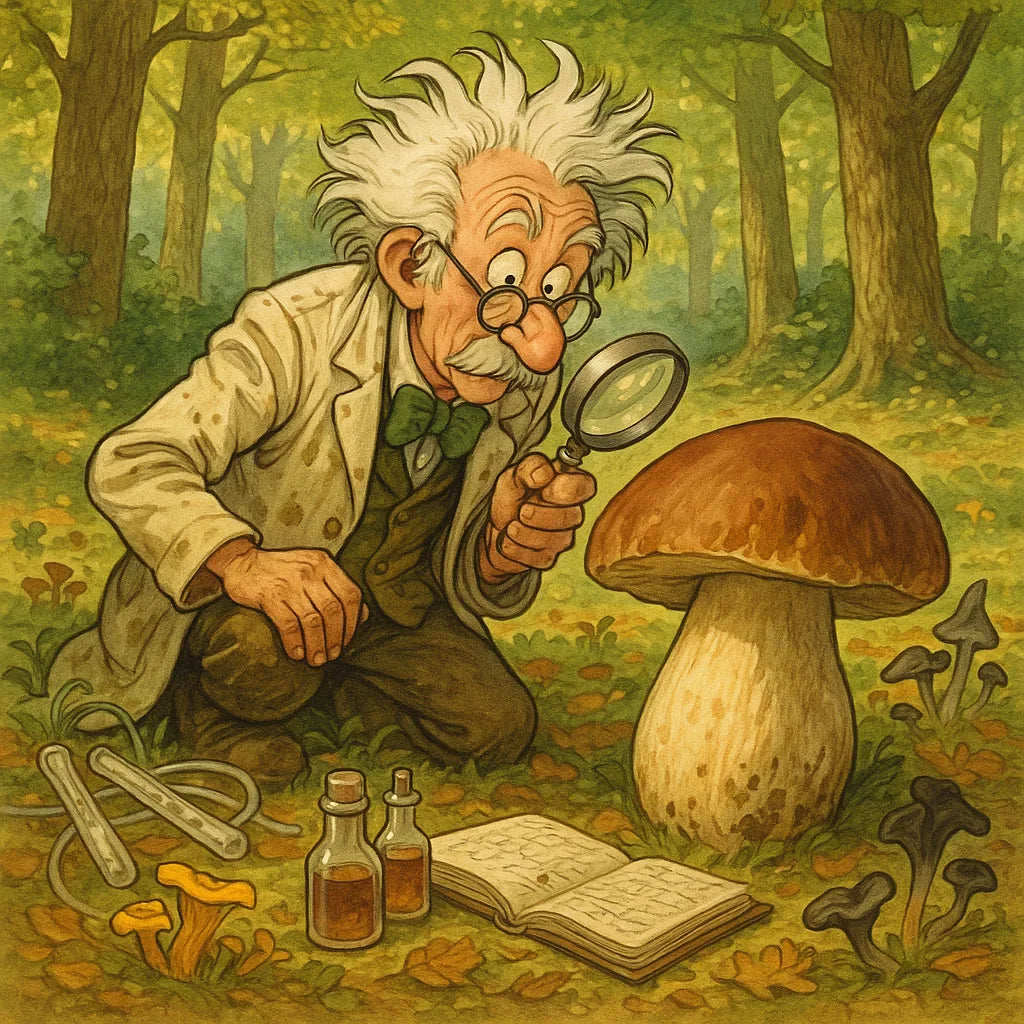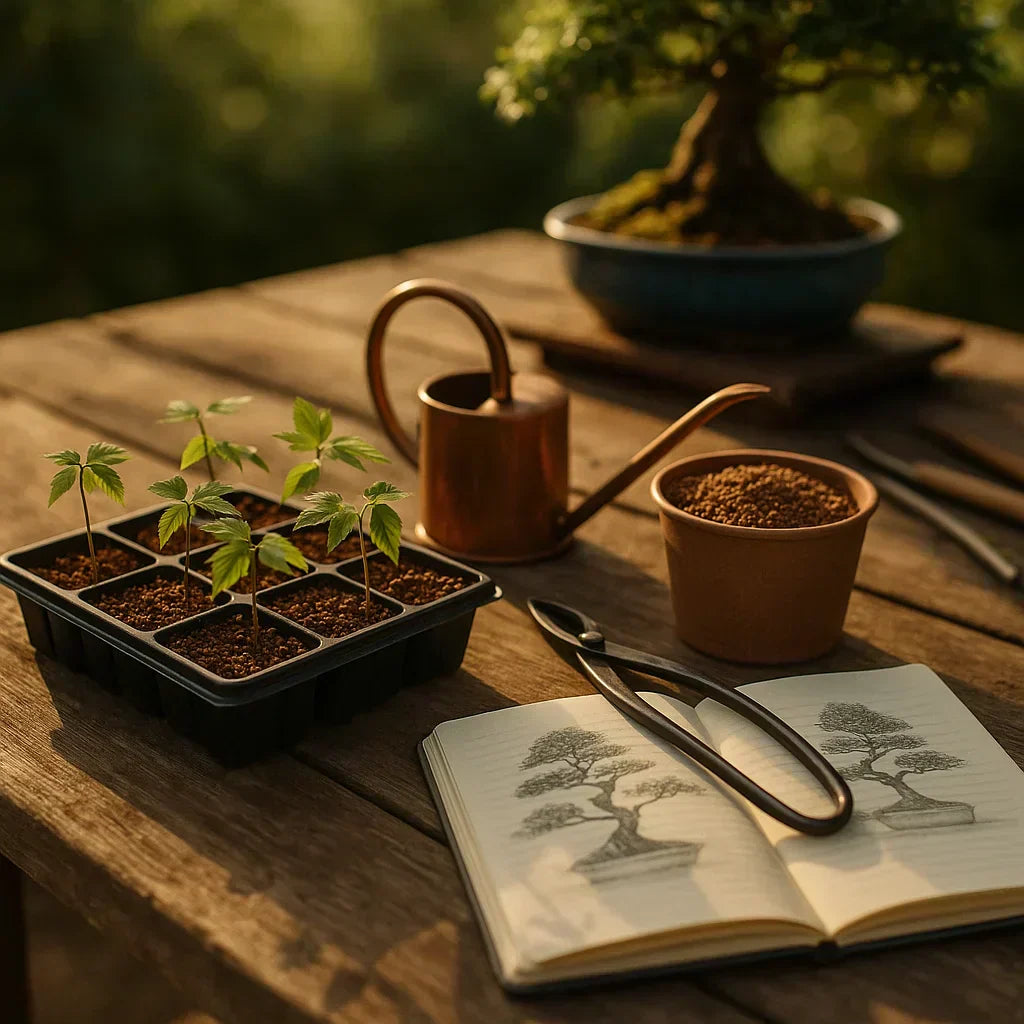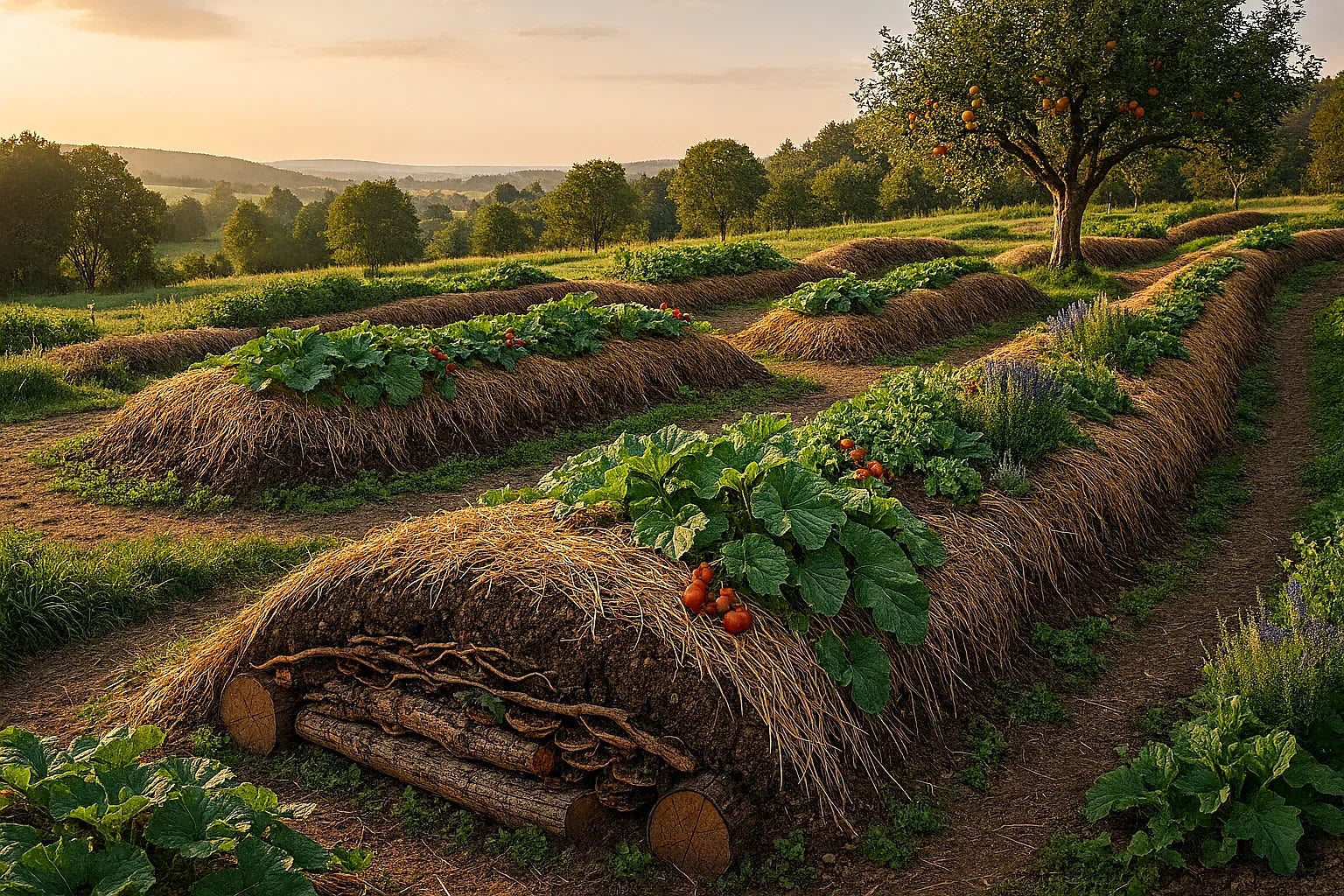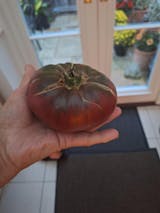🍄 Grow your own forest mushrooms
An immersive experience at the heart of the forest... at your home!
Have you always dreamed of harvesting porcini, chanterelles, or black trumpets directly in your garden or at the forest edge? Thanks to our liquid mycelium tubes, you can now create your own mycorrhizal zones and grow these precious species in a natural environment. This gentle and respectful method is based on the symbiosis between trees and fungi: a win-win partnership serving biodiversity.
🧪 1. Mycelium preparation
It all begins with the awakening of a living organism: the mycelium.
Before inoculating the soil, you need to activate your mycelium. To do this, simply dilute it in sweetened mineral water (with syrup without preservatives). This step simulates the favorable conditions for its growth in nature. You will then see white filaments appear in the bottle: this is the fungal network developing.
Quantities :
-
15 ml of mycelium + 1.5 L of water + 15 ml of syrup
-
50 ml of mycelium + 5 L of water + 50 ml of syrup
📌 Tip: use non-chlorinated water and a natural syrup (e.g., apple or peach).
⏳ Incubate this mixture at 20 °C for 10 days, protected from light. Gentle stirring and a slightly pierced cap will help prevent fermentation.
🌳 2. Site choice: biotope and host trees
The secret to a good mushroom? The right tree.
Mycorrhizal mushrooms like porcini or chanterelle live in symbiosis with tree roots. It is therefore crucial to choose the right partners:
-
Deciduous trees : oak, beech, chestnut
-
Compatible conifers : pine, fir
The ideal terrain? A forest edge , with soil rich in humus, aerated, non-compacted, and partially shaded.
🌿 3. Prepare the inoculation substrate
Imitate the forest soil to create a favorable environment.
Depending on the species, the substrate varies slightly:
-
Porcini, Gray Chanterelle, Hedgehog Mushroom, Black Trumpet : forest humus, untreated sawdust, decomposed dead leaves.
→ pH: 5.5 to 6.5 -
Yellow Chanterelle : crushed wood (beech or birch), forest humus.
→ pH: 4 to 6
The substrate must remain slightly moist , but never waterlogged.
🏞 4. Inoculation method
Here is how to present the mycelium in its new habitat.
-
Site preparation
Dig small furrows or shallow holes about 1 meter from the trunk of the chosen tree. -
Substrate placement
Fill the cavities with your moist substrate mixture. -
Inoculation
Pour your activated mycelium preparation onto the substrate. -
Site protection
Add a thin layer of mulch (dead leaves, straw) to retain moisture and avoid direct exposure to light.
🌦 5. Environmental conditions
Nature has its demands... follow the rhythm of the seasons.
-
Moisture : keep the soil moist in summer (light watering if necessary).
-
Ideal temperature : between 10 °C and 25 °C.
-
Exposure : favor the shaded or semi-shaded areas .
📅 6. Seasonality and patience
Mushrooms are patient beings. Be patient too.
Inoculation period:
-
Spring or early autumn , when temperatures are mild and humidity is present.
Fruiting (depending on species):
-
Porcini & Yellow Chanterelle : spring to autumn, after the rains.
-
Hedgehog Mushroom : autumn to early winter.
-
Gray Chanterelle & Black Trumpet : late summer to autumn.
🕰️ Important : the first fruiting can take 2 to 3 years , but once established, the mycelium can produce several years in a row !
🌼 7. Tips and maintenance
Extend the life of your natural mushroom bed.
-
Maintain good soil moisture , without excess.
-
Never use chemical fertilizers on the inoculated area.
-
Lightly aerate the soil if necessary.
-
Avoid trampling or disturb the roots.
-
Encourage biodiversity around (understory plants, other mushrooms) to strengthen symbiosis.
🎓 In summary
Growing forest mushrooms at home is above all recreate a natural balance . This process respects the mycelium's life cycle, promotes biodiversity, and allows you to enjoy exceptional harvests in the long term... provided you show patience and observation.





Leave a comment
This site is protected by hCaptcha and the hCaptcha Privacy Policy and Terms of Service apply.